April 12th, 2021
Most people think of orthodontic treatment in terms of making crooked teeth straight or aligning the teeth. This is an important part of braces or Invisalign and the part of treatment that most patients get very excited about. However, most patients need more than just alignment of the teeth in order to achieve an ideal result and the most esthetic, healthiest smile possible. This is the role that orthodontic elastics or rubber bands play in orthodontic treatment. Elastics correct the bite and braces or Invisalign straighten the teeth. Well-aligned teeth look much better than crooked teeth, but this change alone will leave the teeth not fitting together very well in most cases. Poorly fitting teeth or “bad bites” can contribute to dental decay, periodontal disease, and temporomandibular joint problems over the course of time.

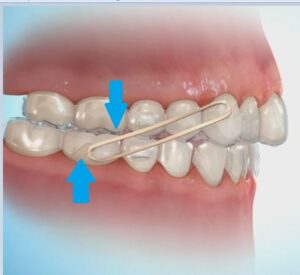
Elastics are the most common bite-corrector used in orthodontic treatment. They can be used to create a similar effect to headgear or other appliances, but are a lot more comfortable and simple to wear. Most patients will need to wear elastics full-time (22 hours/day) to create the desired effect in a timely manner. The elastics are removed and a fresh set of elastics is placed four times per day. (Breakfast, lunch, dinner, and before bedtime.) You simply remove them to eat and put new elastics into your mouth after you are done eating.
Elastics will change the way your bite fits together, which highlights the importance of who you choose to help you with your orthodontic treatment. Elastics worn incorrectly can cause a number of dental problems including tooth loss. Orthodontists are specifically trained in this type of treatment. Only 6% of dentists are actually trained orthodontists, so make sure the doctor helping you with your treatment is a member of the American Association of Orthodontists. Give Budd Orthodontics a call today if we can be of service to you.
Tags: orthodontic treatment, orthodontist, braces, Invisalign, bite problems, elastics, rubber bands, bite correction
Posted in Health benefits of orthodontic treatment, Orthodontist, Braces, Invisalign, Elastics | No Comments
November 9th, 2020
Most of us associate orthodontics exclusively with the straightening of our teeth. This is a logical association, but the truth is that the importance and influence of orthodontics extends beyond straight teeth and an improved smile. Dr. John Budd and the staff of Phoenix and Scottsdale-based Budd Orthodontics remind our patients in Phoenix, Scottsdale and throughout the Valley of the Sun that proper orthodontia elicits a number of health benefits that will serve you well moving forward. If you’re a candidate for a visit to the orthodontist, a better understanding of these benefits may inspire you to schedule that visit sooner than later.
Tooth Decay and Periodontal Disease – properly aligned teeth can prevent certain physical health problems, and tooth decay and periodontal disease are central among them. In terms of tooth decay, untreated orthodontic issues may exacerbate this issue. Simply put, properly aligned teeth are easier to keep clean and collect less plaque. Should plaque and tartar continue to build up in your mouth, you may be at risk of developing gingivitis and, eventually, periodontal (gum) disease. Should this condition worsen, certain teeth may become loose or have to be removed.
As you can see, even if you are making an effort to keep your teeth clean, their misalignment may render your diligence in this area ineffective. Thus the importance of scheduling an appointment with your local orthodontist to make sure your teeth are properly aligned.
Fracture or Injury – protruding upper teeth are more at risk of being broken or fractured in an accident than properly aligned teeth. Repositioning your teeth via orthodontics can greatly reduce this risk.
Improved Self-Confidence – the truth is that we live in a world in which first impressions are vital. One of the key elements of making a good first impression is your smile, and if your smile is less than stellar your self confidence is certain to be as well. Straightening your teeth is not only a good idea from a physical health standpoint. It also makes us feel more confident in social situations, at work or anywhere else in which we interact with others. Being happy with your smile is important, and a good orthodontist can create that reality for you.
The benefits of orthodontic treatment are ones that keep on giving. If you’ve been putting off scheduling your visit to an orthodontist, you owe it to yourself to call today. For your health and your self-confidence, it makes sense to see an orthodontist and begin the process of properly aligning your teeth.
Tags: periodontal disease, self-confidence, orthodontist, braces, Invisalign, tooth decay, tooth injury, health benefits of orthodontic treatment, tooth fracture
Posted in Health benefits of orthodontic treatment, Braces, Invisalign, Adult orthodontic treatment | No Comments
July 9th, 2020
You often hear people say that a beautiful smile will open doors of opportunity. But is this really true? Will it really help you find a job? This topic may be something a lot of people are thinking about given the recent huge increase in unemployment due to the coronavirus pandemic. According to a recent study published in the American Journal of Orthodontics and Dentofacial Orthopedics, the answer is a definitive yes.

In this study, which was published in the October 2014 issue, ten patients had their photographs taken prior to orthodontic treatment and then digitally altered to simulate orthodontic correction of the teeth. The altered and unaltered photographs were then presented to 100 persons responsible for hiring staff for commercial companies. Those responsible for hiring were asked to evaluate their impressions of the patients likelihood of being hired, their honesty, intelligence and efficiency at work. On average, patients with ideal dental aesthetics were evaluated as superior with respect to intelligence and likelihood of being hired compared to those with non-ideal dental aesthetics. There was no significant difference in the characteristics of honesty and efficiency observed in this study. The findings of the study concluded patients with ideal smiles are considered more intelligent and have a greater chance of finding a job when compared with persons with non-ideal smiles.
I thought this study was fascinating because in our office we often talk about orthodontic treatment helping patients feel more confident and proud of their smile, but it is interesting to see proof of the tangible benefits that orthodontic treatment can provide.
If you would like a free orthodontic consultation to evaluate your need for our services, we invite you to visit Budd Orthodontics online to see our locations, treatment options, patient results and more!
May 28th, 2020
Have you ever wondered why some people are just born with great smiles and others seem to have received the short end of the stick when it comes to teeth? Is it all just related to genetics?

There is absolutely a genetic component to how teeth develop, and genetics play into the likelihood that you will develop orthodontic problems as your adult teeth erupt. However, this is only part of the story. The environment in which your teeth erupt also has a significant influence on how they develop. In fact, I have treated identical twins, who are by definition genetically identical, but when you look in their mouth, their teeth are very different.
There are a number of factors that can affect the development of your teeth and bite. One common example is thumb sucking. Thumb sucking will change the pressure that your lips, tongue, and cheeks apply to your developing teeth and jaws. It tends to have a narrowing effect on the upper jaw and creates protrusion of the front teeth. Patients who have sucked their thumb for a prolonged period of time often require an "expander" to undo the damage as well as braces. We often joke with patients that the only things that should go into their mouth are food and a toothbrush. Everything else you want to keep out.
Another example of how environment influences dental development are children who eat a lot of sugary drinks and food. It's OK to have a sweet treat from time to time, but patients who constantly "nibble" or "sip" on sugary snacks or drinks and don't brush their teeth in between tend to get decay. If a patient loses a baby tooth early due to decay, it can disrupt the correct order in which the permanent teeth grow in and cause significant bite problems. If you have a child who has lost a tooth early due to decay, you should consult with an orthodontist to prevent the development of bite problems in the future.
February 11th, 2020
Let’s be honest, seeing a one or two year old sucking their thumb is kind of cute. It makes you want to pick up the baby and give it a big hug and a kiss. However, thumbsucking is not limited to infants and toddlers.

As an orthodontist, I have had patients as old as 50+ who are thumb suckers. These patients relate to me that the thumbsucking is soothing and just helps them relax, especially when it is time to fall asleep. I have no problem with thumbsucking in regard to the social and emotional benefits it provides to some patients. We all have different ways of relaxing and easing the stresses of daily life. Who am I to judge?
The problem with thumbsucking from an orthodontic perspective lies in its effect on the movement of the teeth and the growth of the jaws. Prolonged thumbsucking over months and years will guarantee the need for braces and probably an expander in the future. The suction your mouth creates as you suck your thumb pushes your cheeks against your upper back teeth and splays your upper front teeth forward and your lower front teeth backward. The classic thumb sucker has a narrow palate with a crossbite on both sides and their front teeth stick out and don’t touch. The longer the thumbsucking goes on, the more exaggerated are the effects - especially once the permanent teeth start to grow in.
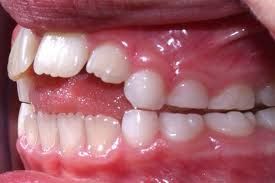
With my own children, I encourage the use of a pacifier to help the babies fall asleep and then when my kids have turned two, the “binky” fairy comes and takes away their binky to give it to another deserving child and leaves an exciting toy to replace it. They struggle for a few nights and then usually settle in without missing a beat. Thumbs are a lot harder to get rid of.
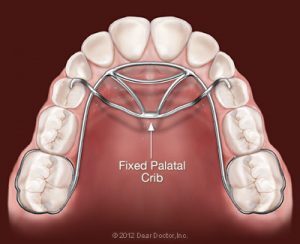
Treatments are available to help with the cessation of thumbsucking. I will usually recommend a product called Mavala (purchased on Amazon) as a first line of defense and then a habit appliance for patients who continue to struggle. If you need help easing your child away from their thumbsucking habit, or if you yourself have desires to move on from thumbsucking, please contact our office. Your orthodontist can definitely be a huge help in avoiding more serious orthodontic problems down the road.
November 22nd, 2019
So your orthodontist said your child needs a palatal expander? Here is some helpful information to become familiar with what to expect moving forward.
How does it work?
Palatal expanders are a commonly used appliance in orthodontics to make room for crowded teeth, correct crossbites, increase the size of the airway and/or widen a narrow upper jaw. Many of us have held a newborn baby and felt the “soft spots” on their tender little heads. Those “soft spots” are cartilage sutures that have not yet closed in their developing skulls. In much the same way, each of us has a cartilage suture in our upper jaw that splits the upper jaw into two halves. At the onset of puberty, that suture starts to fuse together into one bone. However, prior to the fusion of the bone the upper jaw can be expanded significantly using a palatal expander. As the palate expands, the cartilage is stretched and stimulates bone to fill into the space created by the expander. If given enough time to stabilize, the jaw will then fill in with bone at the new “corrected” width. Pretty amazing!
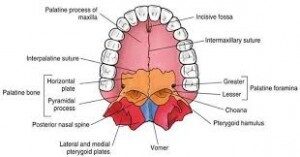
Interestingly, the lower jaw does not have a suture to match the upper jaw, which limits the amount of expansion you can achieve on your bottom teeth.
What does it look like?
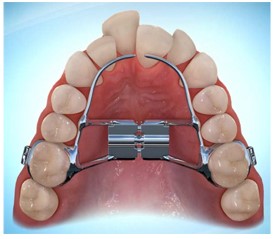
The expander connects to your top molar teeth with little metal rings called “bands”. Wires connected to these bands rest gently on the teeth. There is an activating mechanism in the center of the expander that can easily be turned with a “key” that is given to each patient. Your orthodontist will show you how to use the key – it is really easy! The key will slowly and gently widen the jaw with each activation about 0.25 mm. In our office, one activation is recommended each night before bedtime. Over the course of each 4 day period, the jaw widens just 1 millimeter. While this may not seem like much, within just a few weeks you will have created much more space for the teeth to fit into. You may experience some slight discomfort as the suture starts to open, but this process is relatively pain-free.
As the suture opens, you will often see a space open up between the two front teeth. This is normal and is evidence that the expander is doing its job. After your expansion is complete, the space will naturally start to close as the crowded teeth unravel. Any residual space will be closed with your braces.
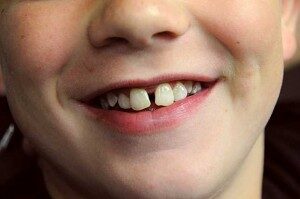
How do you maintain the expander?
Keeping your teeth healthy while going through treatment with a palatal expander is pretty easy – it just takes a little extra time and effort when you are brushing and flossing your teeth. Your orthodontist will likely give you some extra little brushes to help you clean well around your expander and show some spots that are commonly missed. A Waterpik or similar device is also a helpful tool to clean around the expander. You should brush your expander the same way you would brush your teeth - until it looks clean and shiny with no white “fuzzies” (plaque) sitting on it.
Before you know it, you will have the stunning smile you have always wanted. Good luck! If you have any questions regarding expanders or orthodontic treatment, give our office a call.
October 28th, 2019
Orthodontic health can be defined as a healthy, active smile that is aesthetically pleasing, with teeth and jaws in good alignment. October is orthodontic health month and a chance to focus on why orthodontic treatment can be a life-enhancing – even life-changing experience. Have you ever known someone who covers their mouth when they start to laugh? Whenever I see this happen, I feel bad for the person who is obviously embarrassed by their smile. Of all the things about our health and appearance, crooked teeth are one of the easiest things to change and the one of the most powerful changes to observe. And with good retainer wear, it is permanent! Teeth don’t get wrinkled or saggy and with proper care and maintenance they will be beautiful for a lifetime.

You also don’t have to feel like you are being vain by seeking out orthodontic treatment. Unlike some other cosmetically oriented procedures – orthodontic treatment actually improves the health of your teeth. Well-aligned teeth and jaws have a lower risk of fracture, tooth decay, and periodontal disease. Straight teeth are literally healthier than crooked teeth. A beautiful smile does require braces or Invisalign in most cases – there are very few of us who are born with perfectly aligned teeth. While the process of getting to that final amazing smile can take a bit of time and effort, it is well worth it. Give Budd Orthodontics in Phoenix a call and let us get you on the path to a better you. You will be so glad you did. Happy Orthodontic Health Month!
August 26th, 2019
Two-phase orthodontic treatment generally means that part of the orthodontic treatment is completed while the patient still has some baby teeth. This part of the treatment is referred to as Phase I and is usually completed sometime between ages 7-10. After the eruption of the remaining adult teeth, the second phase of orthodontic treatment involving full upper and lower braces is completed. This part of the treatment is referred to as Phase II. The idea behind this type of treatment is that some of the more severe orthodontic problems can be treated more effectively by treating them in two stages.
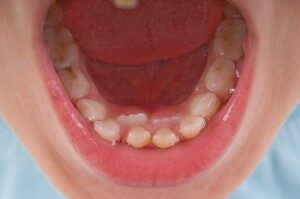
Some examples of problems that can be treated effectively by doing two-phase orthodontic treatment are:
- Creating spacing for severely crowded teeth or repositioning teeth that are developing incorrectly
- Creating facial balance through influencing jaw growth
- Reducing the risk of fracture or uneven wear to protruding teeth or teeth in crossbite
- Preserving space for teeth that have not erupted
- Correcting harmful habits like thumb sucking
- Preventing damage to gum tissue around teeth that are erupting outside of a normal position
The type of appliances that are used in Phase I while patients still have baby teeth varies a lot. It can be as simple as a special retainer to correct one tooth that is really crooked or as complicated as partial upper and lower braces with a palatal expander. If a Phase I treatment has already been completed, Phase II is generally more straightforward involving traditional braces or Invisalign as most of the more severe orthodontic problems have already been corrected in Phase I treatment. Minor problems like mild spacing or crowding, mild overbites, and mild to moderate misalignment can generally be treated just as effectively with a single phase treatment at around age 11-13 depending on the age of eruption of the adult teeth.
July 29th, 2019
It is no exaggeration to say that braces can provide a life-changing result to someone with an unattractive smile – not to mention reduce the risk of tooth decay, gum disease, and fractured teeth. That is one of the reasons I love being an orthodontist. My profession does not deal with life and death – only the quality of life.

However, the benefits of orthodontic treatment are definitely more than just a beautiful smile. Orthodontics is devoted to bringing the teeth, lips, and jaws into a proper, healthy relationship. Straight teeth are much easier to keep clean so having well-aligned teeth can significantly reduce the risk of tooth decay and gum disease. Also, straight teeth are less likely to fracture and they wear more evenly. Healthy, straight teeth will last longer and work better than crooked, ugly teeth. These are some of the scientifically proven benefits of orthodontic treatment.
It has also been proven that an attractive smile inspires confidence in social situations. In a job interview, if you have two equally qualified candidates and one has a beautiful smile and the other does not, the candidate with an attractive smile is more likely to get the job. A healthy, beautiful smile is one of the best investments that parents can make for themselves or their children to open more doors of opportunity and enhance self-confidence for the future. Check out our website to see some of the dramatic changes that can happen with orthodontic treatment.
February 27th, 2019
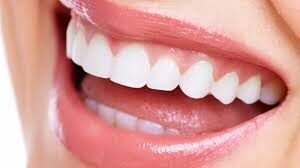
Most of us associate orthodontics exclusively with the straightening of our teeth. This is a logical association, but the truth is that the importance and influence of orthodontics extends beyond straight teeth and an improved smile. Dr. John Budd and the staff of Phoenix-based Budd Orthodontics remind our patients in Phoenix, Scottsdale and throughout the Valley of the Sun that proper orthodontia elicits a number of health benefits that will serve you well moving forward. If you’re a candidate for a visit to the orthodontist, a better understanding of these benefits may inspire you to schedule that visit sooner than later.
Tooth Decay and Periodontal Disease – properly aligned teeth can prevent certain physical health problems, and tooth decay and periodontal disease are central among them. In terms of tooth decay, untreated orthodontic issues may exacerbate this issue. Simply put, properly aligned teeth are easier to keep clean and collect less plaque. Should plaque and tarter continue to build up in your mouth, you may be at risk of developing gingivitis and, eventually, periodontal (gum) disease. Should this condition worsen, certain teeth may become loose or have to be removed.
As you can see, even if you are making an effort to keep your teeth clean, their misalignment may render your diligence in this area ineffective. Thus the importance of scheduling an appointment with your local orthodontist to make sure your teeth are properly aligned.
Fracture or Injury – protruding upper teeth are more at risk of being broken or fractured in an accident than properly aligned teeth. Repositioning your teeth via orthodontics can greatly reduce this risk.
Improved Self-Confidence – the truth is that we live in a world in which first impressions are vital. One of the key elements of making a good first impression is your smile, and if your smile is less than stellar your self confidence is certain to be as well. Straightening your teeth is not only a good idea from a physical health standpoint. It also makes us feel more confident in social situations, at work or anywhere else in which we interact with others. Being happy with your smile is important, and a good orthodontist can create that reality for you.
The benefits of orthodontic treatment are ones that keep on giving. If you’ve been putting off scheduling your visit to an orthodontist, you owe it to yourself to call today. For your health and your self-confidence, it makes sense to see an orthodontist and begin the process of properly aligning your teeth.





















 Website Powered by Sesame 24-7™
Website Powered by Sesame 24-7™